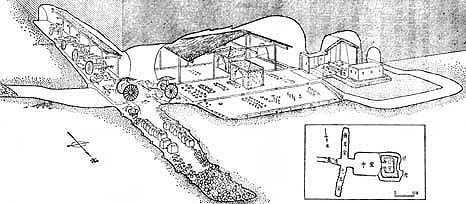|
|
||||||||||
|
|
||||||||||
|
||||||||||
|
Liu Sheng and Dou Wan were buried in two separate caves hollowed out of a mountainside. Each tomb has an entrance passage, two side-chambers for storage, a large central area, and a rear chamber in which the coffin was placed. The central chambers in both tombs originally had wooden structures with tile roofs, which have since collapsed. Liu Sheng's tomb:
What are some differences in terms of tomb construction between this tomb and the earlier ones examined? How do the contents of the tomb and the division of burial goods reflect changing beliefs about the afterlife? What is the likely significance of the stone and clay figures? |
||||||||||

